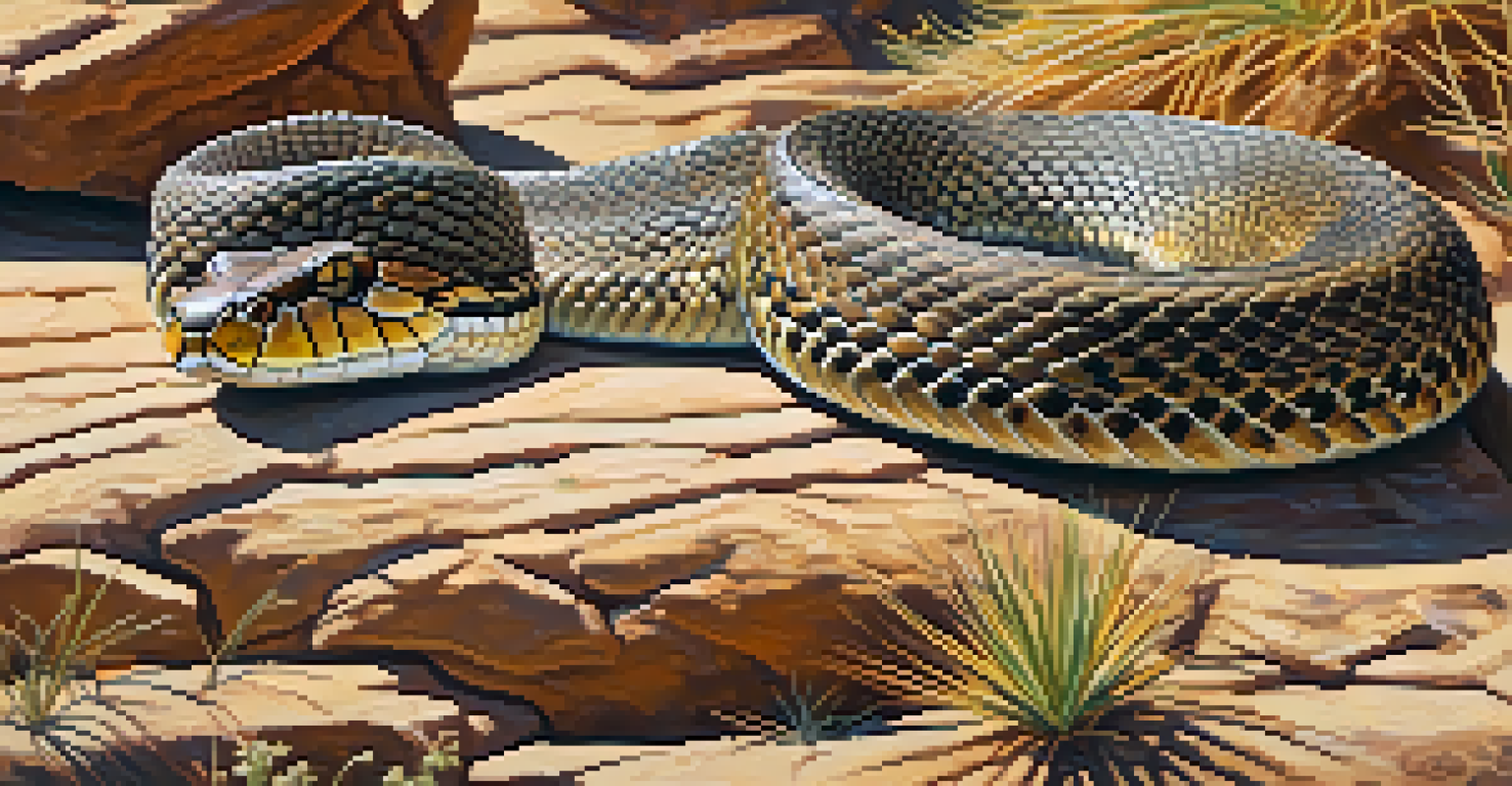How Awareness of Local Wildlife Can Improve Self Defense Skills

The Connection Between Wildlife Awareness and Self Defense
Understanding local wildlife can significantly enhance your self-defense skills. When you are aware of the animals inhabiting your surroundings, you can better anticipate potential encounters. This mindfulness helps you stay calm and collected during unexpected situations, a crucial aspect of effective self-defense.
The greatest danger in times of turbulence is not the turbulence; it is to act with yesterday's logic.
For instance, recognizing the signs of bear activity in your area can prepare you for a possible encounter. Instead of panicking, you can respond appropriately by making noise or slowly backing away. This level of preparedness not only boosts your confidence but also equips you with the knowledge needed to handle various wildlife situations.
Moreover, being knowledgeable about local species can help you distinguish between harmless and potentially dangerous animals. This understanding allows you to assess risks more accurately and improves your decision-making in high-pressure scenarios.
Identifying Threats: The Role of Local Wildlife Knowledge
A key component of self-defense is recognizing threats before they escalate. By understanding the behavior and habitat of local wildlife, you can identify potential dangers more effectively. This awareness can prevent dangerous encounters and give you a chance to react appropriately if a situation arises.

Take, for example, a hike in an area known for rattlesnakes. If you are aware of their habits, such as basking on warm rocks, you can avoid stepping too close, thus reducing your risk of an encounter. Recognizing these warning signs can be the difference between a safe outing and an emergency situation.
Wildlife Knowledge Boosts Confidence
Understanding local wildlife enhances your self-defense skills and helps you remain calm during potential encounters.
Additionally, understanding wildlife can help you read the environment. Animals often display unusual behavior when a threat is near, serving as nature's alarm system. By paying attention to these cues, you can enhance your situational awareness, a crucial skill in self-defense.
Learning Defensive Strategies from Animal Behavior
Many animals have developed instinctual behaviors to protect themselves from predators, and these strategies can offer valuable lessons for humans. Observing how animals react to danger can inspire self-defense tactics that you can adapt for your own safety. For example, the way a deer freezes and then bolts can teach you about the importance of stealth and movement.
Nature does not hurry, yet everything is accomplished.
By studying local wildlife, you can learn how to blend into your environment, minimizing the chances of drawing attention. This stealth approach can be particularly useful in urban settings where escape routes are often limited. Adapting these lessons from nature can improve your self-defense training.
Moreover, some species exhibit group behaviors that enhance survival. Learning about these social dynamics can inspire teamwork in self-defense strategies, especially in situations where you may need to rely on others for assistance. Understanding and applying these principles can lead to more effective self-defense tactics.
Nature as a Teacher: Enhancing Observation Skills
Being aware of local wildlife sharpens your observation skills, which are vital in self-defense scenarios. When you regularly pay attention to your surroundings, you develop a keener eye for detail. This heightened awareness is crucial when assessing potential threats, whether they come from animals or humans.
Consider the simple act of watching birds. Their behavior can indicate changes in the environment, alerting you to nearby dangers. This practice not only enhances your ability to notice subtle cues but also fosters a habit of mindfulness that extends beyond wildlife observation.
Identifying Threats Through Awareness
Recognizing the behaviors and habitats of local animals allows you to effectively identify and assess potential dangers.
As you cultivate these observation skills, you become more adept at noticing patterns and anomalies in your environment. This growth in awareness can significantly improve your response times in self-defense situations, allowing you to act swiftly and decisively.
Utilizing Local Wildlife to Build Confidence
Knowledge of local wildlife can also boost your confidence in self-defense situations. When you understand the behaviors and habitats of nearby animals, you feel more equipped to handle encounters. This confidence translates into a calm demeanor, which is crucial when faced with potential threats.
For example, if you’re hiking and hear rustling in the bushes, knowing it could be a harmless rabbit rather than a dangerous predator can keep your anxiety in check. This assurance allows you to focus on your surroundings and make informed decisions, rather than succumbing to panic.
By embracing local wildlife as part of your self-defense strategy, you gain a sense of control over your environment. This empowerment can enhance your overall awareness and readiness, making you a more formidable presence in any situation.
Practical Exercises for Wildlife Awareness and Self Defense
Incorporating practical exercises into your routine can enhance both your wildlife awareness and self-defense skills. Activities such as nature walks or wildlife photography encourage you to observe and engage with your environment. These experiences build familiarity with local species and their behaviors, which can be invaluable in a self-defense context.
You might also consider taking self-defense classes that integrate outdoor training. Practicing techniques in natural settings can simulate real-life scenarios where wildlife encounters may occur. This hands-on experience can help you apply your knowledge in a controlled environment, preparing you for potential situations.
Nature Teaches Practical Defense Skills
Observing animal behaviors provides valuable insights that can inspire effective self-defense tactics for personal safety.
Additionally, joining local wildlife clubs or participating in community events can further enhance your understanding of local fauna. Engaging with others who share your interests can provide fresh perspectives and insights, enriching your overall learning experience.
Conclusion: Embracing Wildlife for Personal Safety
In conclusion, awareness of local wildlife plays a crucial role in improving your self-defense skills. By understanding the behavior and habitats of the animals around you, you can anticipate potential threats and respond more effectively. This knowledge fosters a sense of empowerment, allowing you to navigate your environment with confidence.
Moreover, connecting with nature not only sharpens your observation skills but also teaches you practical strategies for personal safety. Whether you’re hiking in the woods or walking through your neighborhood, being mindful of wildlife can significantly enhance your self-defense capabilities.

Ultimately, embracing the lessons nature has to offer can lead to a more secure and fulfilling life. By integrating wildlife awareness into your self-defense training, you can create a holistic approach to safety that benefits both you and the environment.